|
|
Shirone Giant Kite Battle and Festival
|
|
|
|
Mr. Hasegawa, a local rice miller and supplier who headed the Gorogumi O-dako team, picked us up in front of the train station in Niigata. We drove to Shirone, where we stopped at the Shirone Kite Museum.
As we left the museum, a team of children in uniform, came marching by, carrying a large rolled up O-dako kite. They blew whistles as they walked in cadence. They waved and Mr. Hasegawa informed us that today was children’s day, the first day of the festival.
|
|
|
|
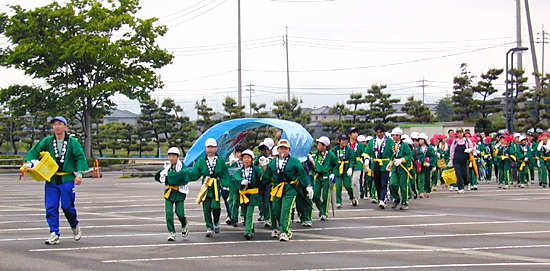 |
|
|
|
|
|
|
|
Leaving the museum and waving goodbye to the children we made one stop before proceeding to the river where the kite battle would take place. The stop was a large warehouse where all the kites that had been made during the past year were stored. We could not believe how many kites there were. There were hundreds of large O-dako kites (O-dako means “big kite” in Japanese) stacked on the floor, and hemp bridle lines hanging everywhere.
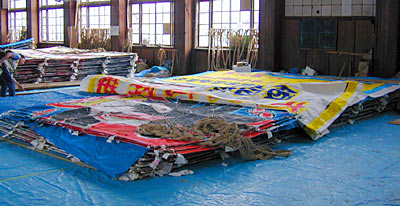

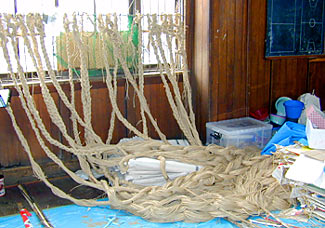

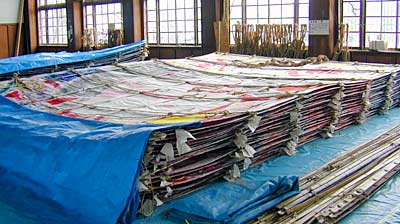

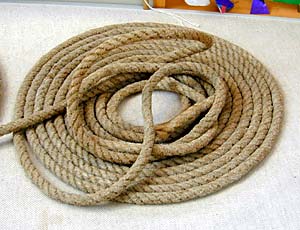

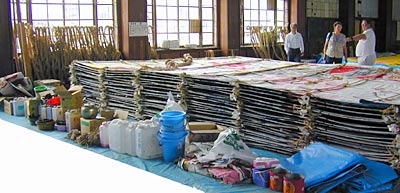

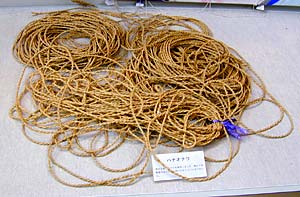
Large logs are tied to the backs of the kites for the tug of war
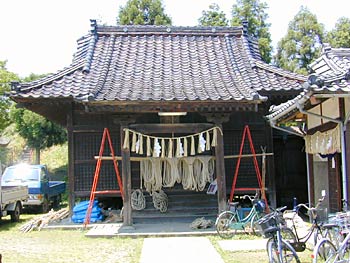
A few minutes later we were along the river where the kite battle takes place, and pulling the kite line with the children. Since there were hardly any spectators, and it was children’s day, it seemed like good fun.
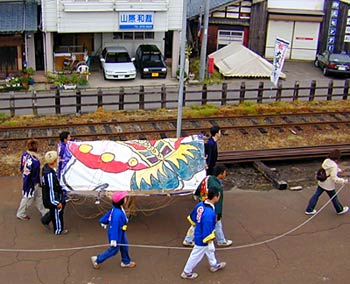

There are seven teams on each side of the river Nakanoguchi, 7 from Shirone and 7 from Ajikata, who each fly the O-dako kites.
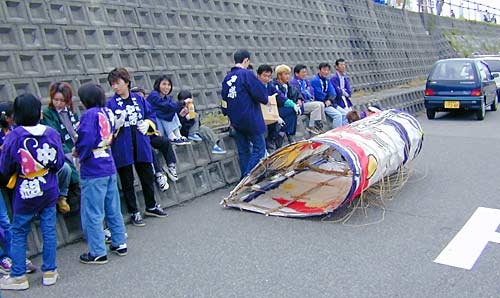
The children’s O-dakos are only about half size of the ones used by the main teams and so are easier to manage. The real fighting we were told would begin the next day. The teams line up along the banks of the river, and set up the kites. Teams gather along the flying line, and then when ready, a command is given, and the team (of about 25-30 children) run down the sidewalk along the bank of the river, pulling the flying line on the kite. The object is to entangle with the kite from the opposite site of the river. A tug of war begins to see who can get a piece of the others’ rope. There is a log tied to the back of the kite to aid in the entangling. 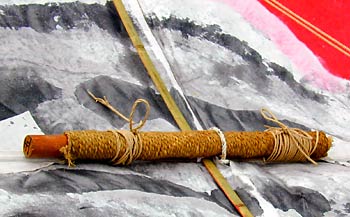
The children get very excited and run like crazy down the sidewalk, but have to adjust to the other kite flying across the river. 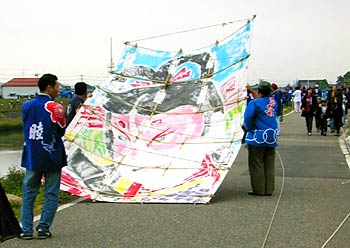
More often than not the kites simply fall into the river and the washi paper dissolves immediately.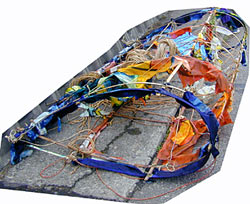 The bamboo bones are recovered. If nothing happens and the kite is recovered, the teams carry the kites back up the sidewalk and re-launch them. If it is destroyed another kite of the same team is brought out. With luck, the kites from two teams on either side of the river will hook each other's kite, and the lines will get entangled.
The bamboo bones are recovered. If nothing happens and the kite is recovered, the teams carry the kites back up the sidewalk and re-launch them. If it is destroyed another kite of the same team is brought out. With luck, the kites from two teams on either side of the river will hook each other's kite, and the lines will get entangled.
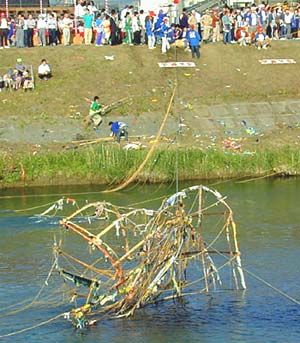

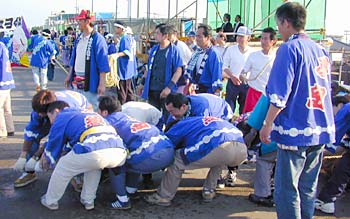
This means there will be a tug of war.The teams then pull the line to a special ramp along the mid point of the river, and set up a long line tug of war. The ends are tied to telephone poles and everyone on the team jumps on the line.
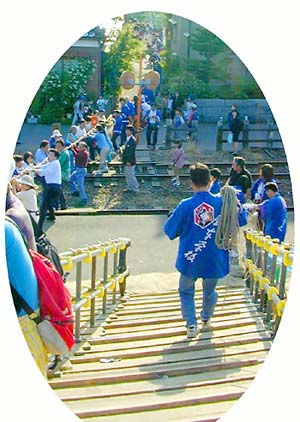

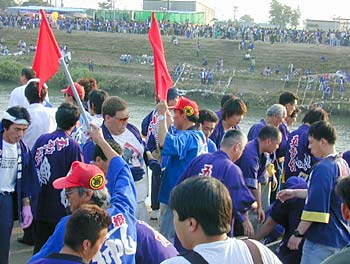
At a signal from the referee the teams on both sides of the river begin pulling while chanting Washoi. If it goes on a while, the referees schedule 2 minute rests and then resume. The tug of war’s are only one at a time, so if another kite tangle happens, they wait their turn to get access to the ramp. The friction is so great on the lines that rolled tatami mats are placed under the line where it lands on the bank of the river, and is kept watered to keep the lines cool.
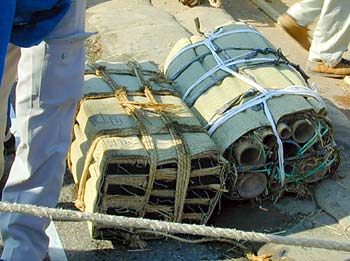

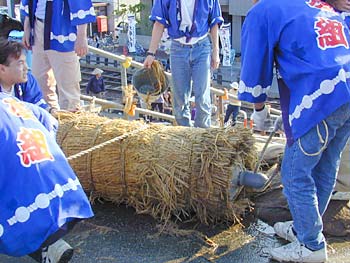

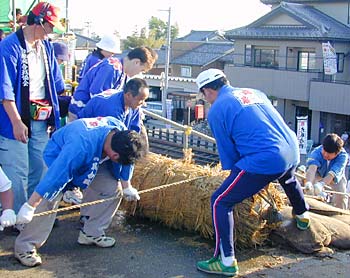
Eventually the line breaks and whoever gets more of the line gets points toward a score to determine the winner at the end of the 5 day festival.
At the end of this first day we realized we were in for a very exciting and exhausting festival.
The next day the festival began in earnest. The kite teams gathered around noon, each team carrying one of their kites, and assembled in the streets of Shirone for the parade, which is the start of the festival. The parade wound through the streets and up to the banks of the river. There were two bands, followed by the Festival officials, and then the teams of O-dako (large kites) and then in turn followed by the teams of rokkaku kites.
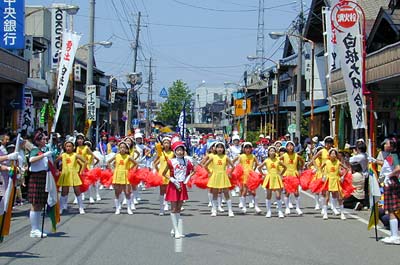

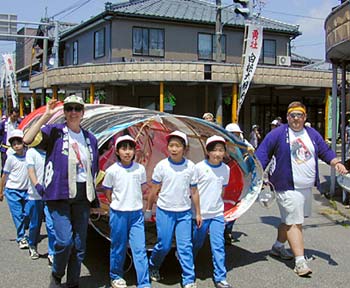

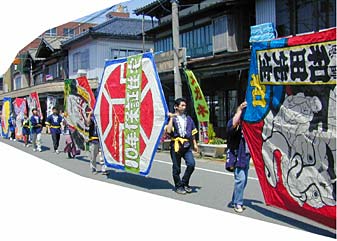

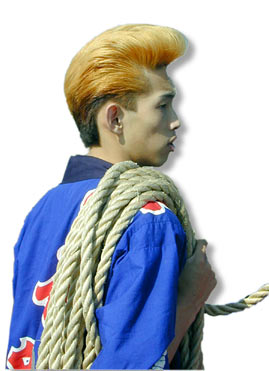
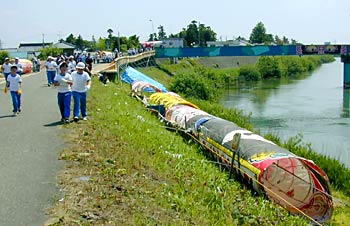 |
|
|
The teams arranged themselves along the banks of the river and the real event got underway.
There were few spectators as this was Friday, and the weekend would bring out the large crowds. The streets began filling with vendors of food and carnival type booths. The kites now were the full size real deal. And because we had come early enough, we got our full amount of kite pulling and running on the flying line. The winds were light, but in the correct direction, and the flying began. There were some engagements and the tug of wars kicked off. Unlike the children’s’ day, there were now rokkaku teams launching 12 foot kites along the sidewalk at random intervals. About 20-25 teams on each side of the river, meant you had to be careful to watch for random kites crashing down from above.
|
|
|
|
|
|
|
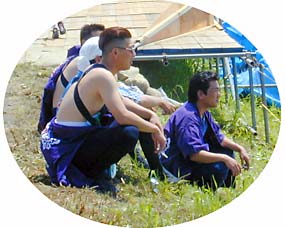 |
|
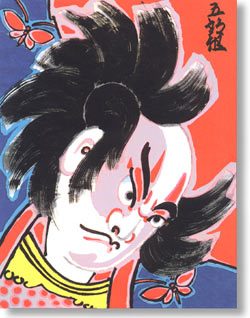 |
|
|
Team icon and kite
|
|
|
|
Gorogumi team members awaiting the start of the first kite battle. |
|
|
|
|
|
|
|
|
|
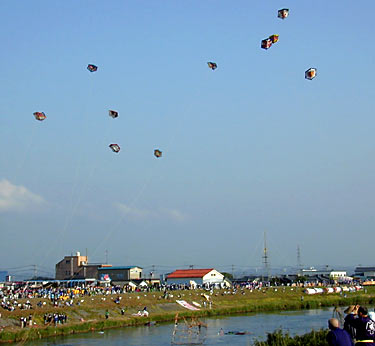

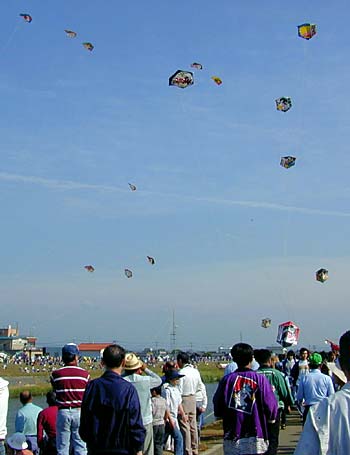

Picture this scene: teams of O-dako flyers (25-30 people) running down the sidewalk launching kites, rokkaku teams of 5-8 people launching anywhere, and kites being returned back up the river, while tug of wars were going on. And unlike the very organized tug of wars of the O-dako, which were only held along the main ramp, the rokkaku teams had tug of wars, anywhere, anytime. So the chaos was beginning. By the end of the day we were tired, but felt good. Ready for more.
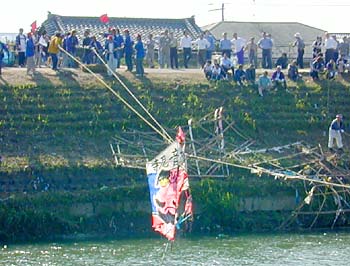

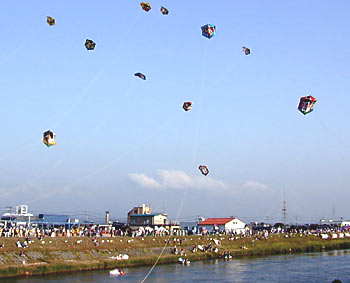
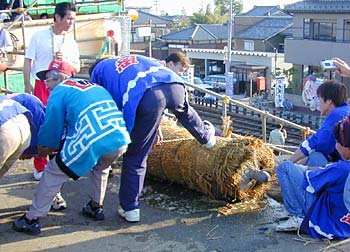

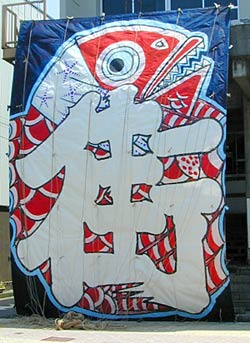
On Saturday we realized it was total mayhem. There were now crowds of spectators on the same sidewalks (about 12 feet wide) as the teams flying and returning kites and doing tug of war. There were far more people on each kite team. Often there were 50 people launching big kites, 30 people on the rokkakus and tug of wars now had upwards of 100 people on them.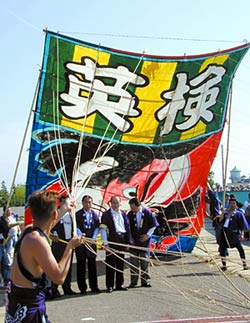
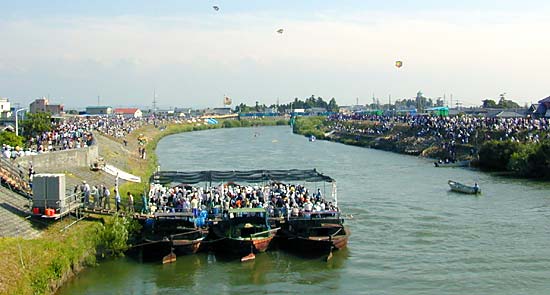
The kite engagements were more frequent than during the week, the kites crashed down on spectators, who were regularly rushed to the hospital by ambulance. You had to pay attention: to the ground to jump over ropes, to the air to watch for incoming kites, duck under returning kites, avoid hitting spectators, and move real fast when your team went running down the sidewalk like a freight train.
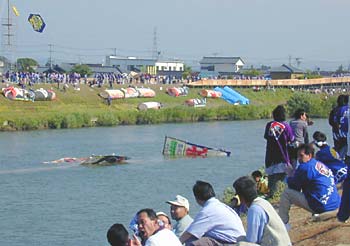

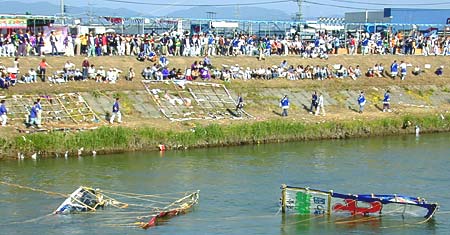
All in all there were 1900 kites flown and trashed over 5 days. And it was work. We felt sore and great at the same time. This is one of the most incredible kite festivals we have ever seen and participated in.
|
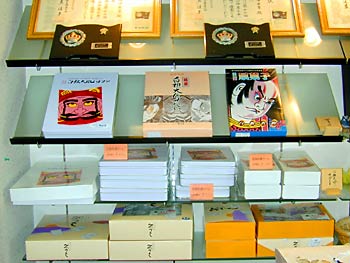 |
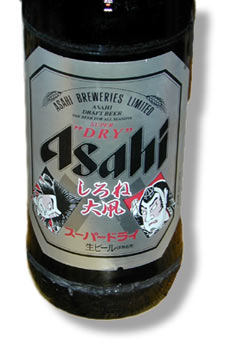 |
|
|
Shirone Kite Cookies
|
|
|
Asahi Beer with Shirone Kites on it
|
|
|
|
|
|
|















 The bamboo bones are recovered. If nothing happens and the kite is recovered, the teams carry the kites back up the sidewalk and re-launch them. If it is destroyed another kite of the same team is brought out. With luck, the kites from two teams on either side of the river will hook each other's kite, and the lines will get entangled.
The bamboo bones are recovered. If nothing happens and the kite is recovered, the teams carry the kites back up the sidewalk and re-launch them. If it is destroyed another kite of the same team is brought out. With luck, the kites from two teams on either side of the river will hook each other's kite, and the lines will get entangled. 
























